In 1960, John W. Reed, President of the Linotype Company, presented a bronze bust of Ottmar Mergenthaler to the students of Cal Poly’s Printing Department (now called Graphic Communication). The bust is about 2/3 life size, and is mounted on a 6.5 inch cube of black marble.
This is the original bronze bust of Ottmar Mergenthaler, given to the students at Cal Poly in January, 1960.
During the last quarter our department has had the pleasure of having Professor Frank Romano as a visiting professor, working with our students in a class on publishing. This is the third time Mr. Romano has donated his time to our students. He has also been an influential contributor to the department’s efforts to expand our printing library and our collection of antique printing equipment.
Among his many interests, Mr. Romano has an encyclopedic knowledge of the Linotype Company and its various products. Frank has written extensively about Ottmar Mergenthaler and the company he built to make the famous Linotype machine that transformed the printing industry, transforming printed communication around the world.
To honor Frank, the faculty decided to present him with a duplicate of our bronze bust of Ottmar Mergenthaler. The job landed at my feet, and I took it through to completion. I began by finding a bronze foundry, one located in Paso Robles, California, just 40 miles away from my home. I took the original Mergenthaler bust to the foundry to show it to them, and get a quote on its replication. The company is Genesis Bronze, a supplier of fine art bronze statues of all sizes. Their work is extraordinary, and their craftsmanship is stunning.
Allen Baxter, one of the craftsmen at Genesis Bronze, heats the latex mold of Ottmar Mergenthaler. Heating the mold allows the wax to flow more evenly inside it without leaving bubbles or voids.
We agreed on a price, and they agreed to carry out the casting in a mere 21 days, which is apparently less than the normal turn around for such a project.
My second task was to procure a block of marble just a bit larger than the original. This proved to be much more difficult than I had expected. I went to the local mortuary and asked about getting a block of marble. I was told that it could be done, but it would cost many hundreds of dollars and would take eight weeks. I didn’t have eight weeks. Apparently marble monument-making is not a local trade any longer; gravestones and monuments are made “somewhere else” and shipped to the local mortuary on completion.
Here, Mr. Baxter pours molten wax into the latex mold. In the background is the cooker filled with wax for the process. The layer of wax is built in several steps using wax that is cooler and cooler to add thickness to the wax master.
I took my search to the Internet. I called every regional stone and marble company, and was met with almost universal responses: too much, and too long to produce. I had to search deeper. I tried searching for trophy parts, and was successful finding small blocks of marble and granite, but nothing as big as I needed – seven inches cubed. I finally tried sculptors’ suppliers, and I found a company in southern California that specializes in marble and granite for sculptors. That company is called Unique Marble and Iron in Chula Vista, California.
I contacted the company’s owner, Michael Zapata, and explained what I needed, and told him how quickly I wanted the block of stone. His response was, “If you need it in 21 days, I’d better get to work!”
After the wax hardens, it becomes the master for the bronze casting. Here, Mr. Baxter proudly displays his work on the wax master, still in half of the latex mold.
In the weeks between then and now I went to Hong Kong for a week, returned, and taught a week of classes. Then I started to call and check on progress. At Genesis Bronze they had made the latex mold and the wax master, and had prepared the “lost wax” ceramic mold for the bronze. They were ready to pour. I called the marble dealer, and did not receive a response. The copper plaque on the front of the marble I ordered from Owosso Graphic Arts in Owosso, Michigan; that part was easy, and the package was waiting for me when I returned from Hong Kong.
The bronze foundry invited me to come and watch the pouring of the bust, and that excited me. I grabbed my camera bag and hurried up to their shop, where the ceramic mold of Mergenthaler was sitting on the concrete skirt next the their kiln. A man in a fireproof suit was carefully moving molds of various projects into the kiln, where they were heated to about 1,400° F in advance of being filled with bronze. Nearby, the forge was being fired with pressurized air and natural gas to melt the bronze within.
Two other workers of Genesis Bronze, Keith and Alfonzo, retrieve the ceramic casting mold from the kiln, where it has been heated to about 1,400°F.
While the heating process proceded, I was invited into the shop to see how the wax is poured into a mold to make the wax master, which is an exact duplicate of the original sculpture. The mold is made of latex that is cast around the original object. A craftsman named Allen demonstrated on my mold how he gets the wax into the mold, sloshes it around to adhere to the latex, then repeats the process to create the wax master. This is precise and difficult work resulting in a wax object that is exactly the shape of the final bronze piece. He explained to me that the process is so precise that a fingerprint on the original will translate into a fingerprint on the final bronze object (one must avoid fingerprints!).
Here, Alfonzo and Keith lift the crucible from the forge, in preparation for pouring the molten bronze into the mold. Mergenthaler is on the left; other projects are on the right.
The wax master is the key part of the “lost wax” process. It is connected to a wooden pole and submerged in a slurry of silica which adheres to the outside of the wax. After this step, the wet silica is rolled in silica “sand” and the process is repeated until the silica forms a shell around the wax that is about one-half inch thick. This process is repeated on the inside of the wax master. A “riser” is built of wax that extends out of the silica shell, then small wax “sprues” come out of the silica to make a path for air to escape when the bronze is poured into the silica casting mold.
The molten bronze fills the casting mold, filling the void left behind when the wax was burned out in the kiln. The process of pouring took only a few seconds.
The wax is still inside this mold representing the final casting. To remove the wax, the hardened silica casting mold is put into the kiln, and the wax is melted out, leaving a void inside the mold where the bronze will go.
Once the wax is gone, that casting mold must be heated to about 1,400° F to make it ready for the molten bronze. Failure to do this can result in bubbles or the shattering of the mold when the hot liquid bronze hits the ceramic mold. Getting the casting mold to that temperature took about 45 minutes. Meanwhile, bars of bronze had been placed in the crucible in the forge, and were being heated to melt the metal.
The bronze is red-hot in the top of the casting mold; it took about 30 minutes to cool to the point where the mold could be broken off of the casting.
Once the mold was at the right temperature, two men wearing silver suits removed the mold from the kiln, and transferred it to a box of sand in front of the forge. The mold was placed upside down so that the riser was upright.
Then in a process that took only seconds to complete, the two men removed the crucible from the forge, and lifted it with tongs, and poured the bronze into the casting mold. It was over before I was fully prepared to photograph the process. They moved along the line of molds, pouring bronze into each one. Then they replaced the crucible in the forge, and added another bar of raw material to the pot, and started the intense flame again.
Mergenthaler’s bust on the ground as the casting mold was broken off. The hole in the top of his head was made to allow access to the internal surfaces. The missing piece was then welded-in to close up the top again.
Ottmar Mergenthaler’s riser glowed red-hot in the mold. Heat radiated from the mold that I could feel more than four feet from the sand box where he lay. I took photos, but kept my distance.
After about 30 minutes of cooling time, the mold was moved to the concrete skirt outside where the workers struck the ceramic mold with a hammer, causing it to crack and break off of the bronze, which was still very hot. They did this repeatedly until most of the casting mold was gone. Then they sprayed cold water on the broze to cause more of the ceramic to shatter off. Then one fellow picked up the bust, placed it on a table, and started working it with an air hammer to remove the remaining ceramic.
This is the top vent of the forge where the bronze bars are melted into liquid to pour various castings. The bar on top is being dehydrated for the next load.
In a matter of minutes I could see Mergenthaler’s handsome features emerge in bronze, an exact replica of the original sculpture.
I left that day to allow them time to finish the work, and I returned to pick it up a couple of days later. It is a stunning piece of work, and as promised, an exact replica of the statue we took in a few weeks earlier.
This is the new bronze bust of Ottmar Mergenthaler, mounted on the beautiful block of black marble, and with the plaque affixed. It is truly a work of art.
On Friday evening at about 6:30 the UPS man delivered the most beautiful block of black marble to my doorstep. I now had all the parts to complete the project.
Over the weekend, I attached the bust to the marble base, attached the plaque to the front, and polished it up for presentation.
And, tonight the faculty got together to honor Frank, and to present him with his very own statue of Ottmar Mergenthaler. He was thrilled.


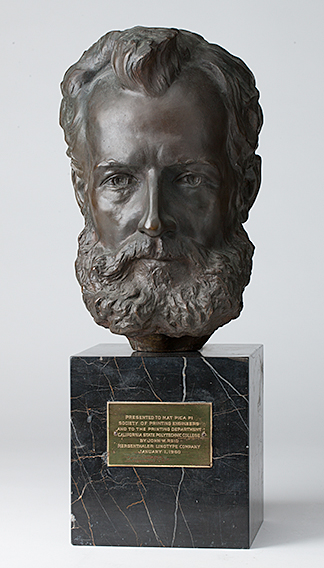
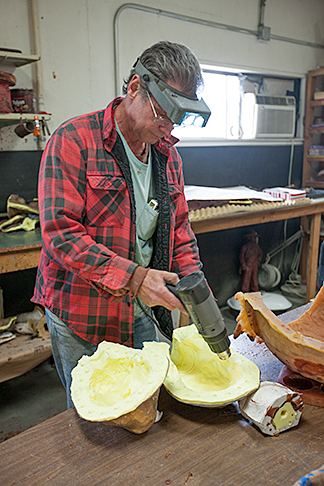
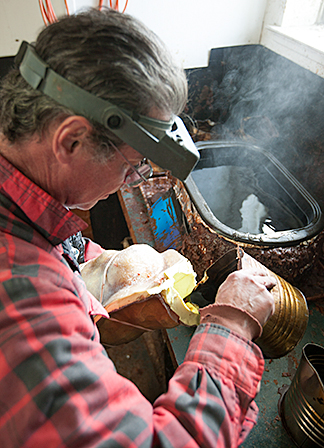
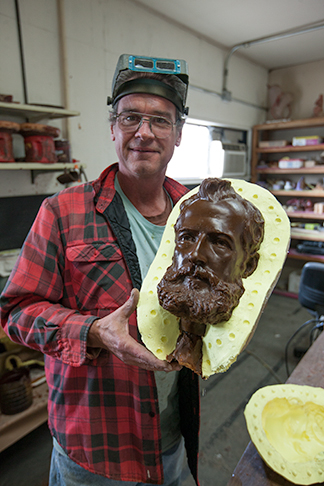
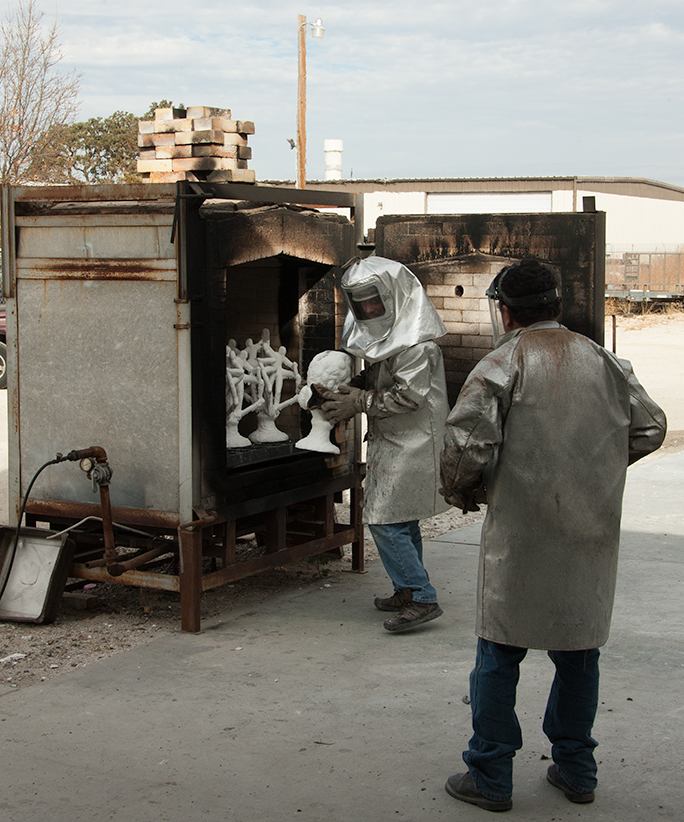
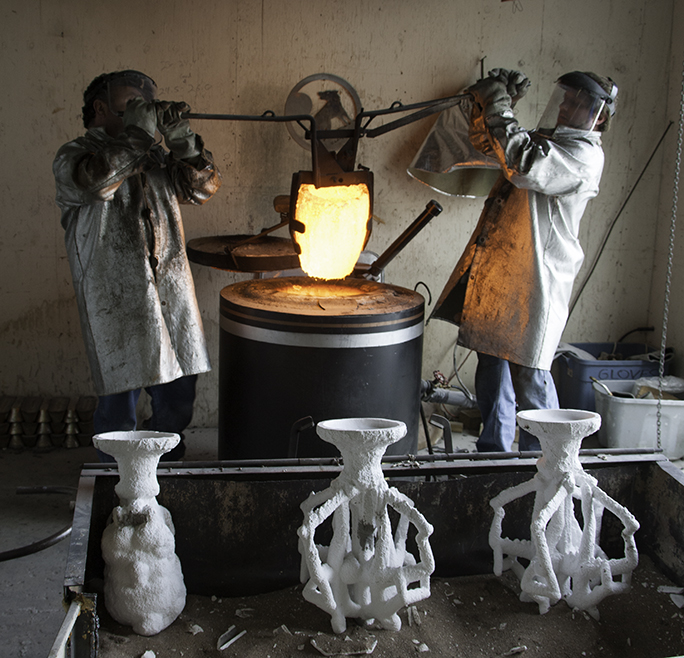
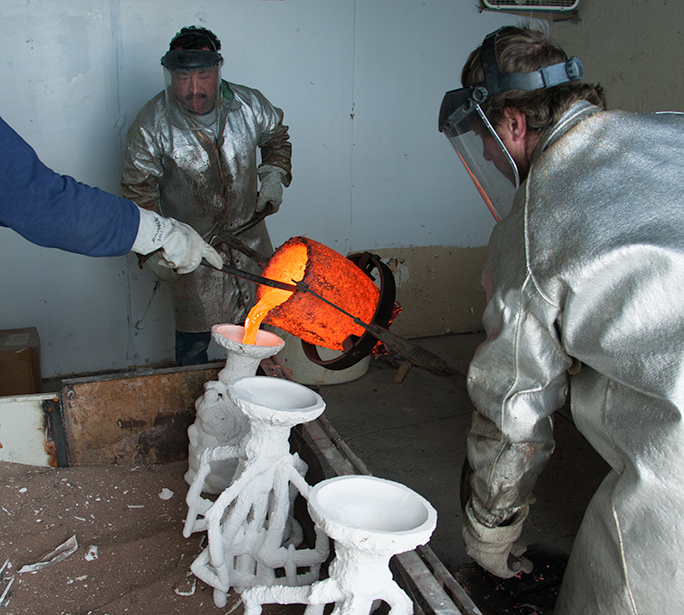
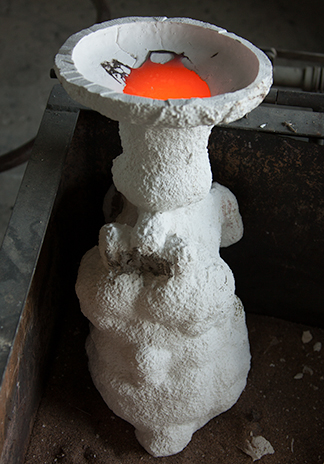
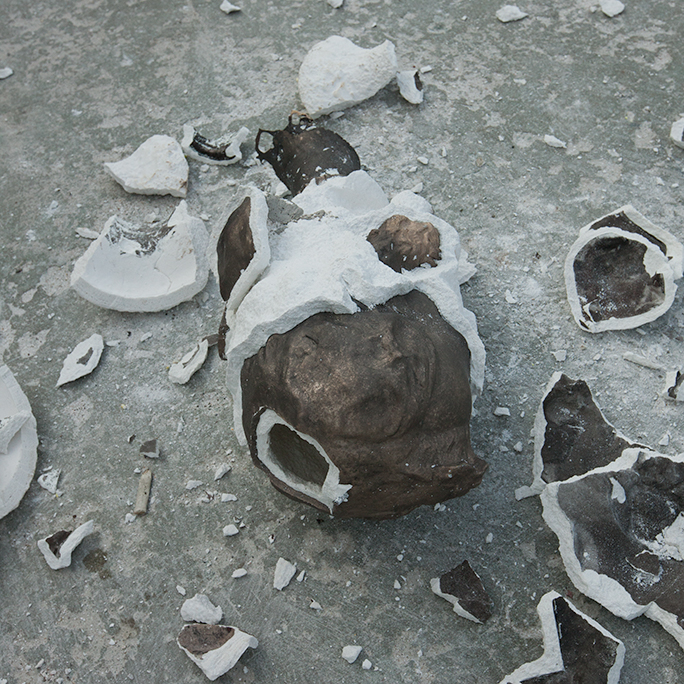
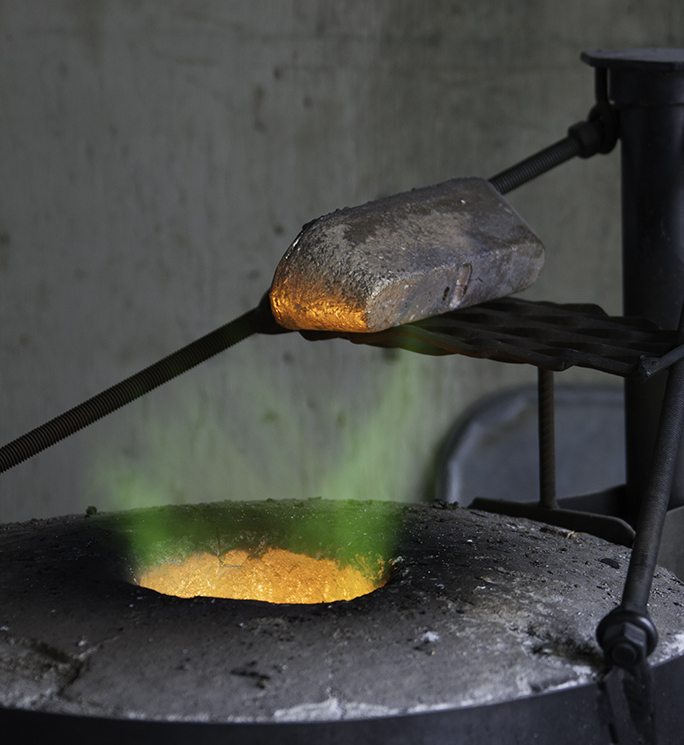
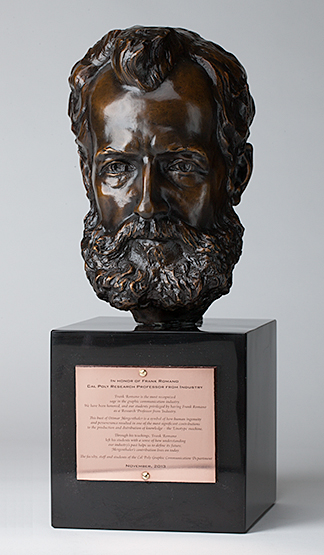
This is a well-deserved honor. Frank works very hard and your gift is quite appropriate. Frank and I taught at R.I.T in the 1980s, though I was in Liberal Arts. He owns a library of over 9000 books on printing!
Thank you, Janet,
His library is now down to 8,999 books. He gave me one about Mergenthaler while he was here at Cal Poly this quarter.
Brian
i love this my uncle is allen baxter he is one of the best bronze casters i have ever seen , if you want to see more of his are look up Atascadero Zoo and they have a couple other art peices of his there